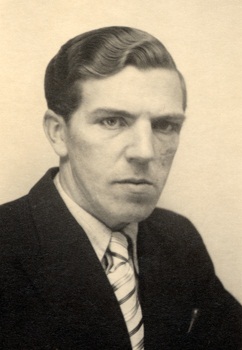Trygve Haavelmo facts for kids
Quick facts for kids
Trygve Magnus Haavelmo
|
|
|---|---|
 |
|
| Born | 13 December 1911 Skedsmo, Norway
|
| Died | 26 July 1999 (aged 87) |
| Nationality | Norway |
| Institution | University of Aarhus University of Chicago University of Oslo University College London |
| Field | Macroeconomics, econometrics |
| School or tradition |
Neo-Keynesian economics |
| Alma mater | University of Oslo |
| Influences | John Maynard Keynes Ragnar Frisch Jan Tinbergen |
| Contributions | Probability approach in econometrics Balanced budget multiplier |
| Awards | Nobel Memorial Prize in Economic Sciences (1989) |
| Information at IDEAS / RePEc | |
Trygve Magnus Haavelmo (born December 13, 1911 – died July 28, 1999) was an important economist from Norway. He was born in Skedsmo. His main work was in a field called econometrics, which uses math and statistics to study economic ideas. He won the Nobel Memorial Prize in Economic Sciences in 1989 for his groundbreaking work.
Contents
Trygve Haavelmo's Early Life and Education
Trygve Haavelmo went to Oslo Cathedral School before studying at the University of Oslo. In 1930, he earned a degree in economics. He then joined the Institute of Economics. A famous economist named Ragnar Frisch recommended him. Haavelmo worked as Frisch's assistant for a while. Later, he became the head of computations for the institute.
Studying Around the World
In 1936, Haavelmo traveled to study statistics at University College London. He also visited Berlin, Geneva, and Oxford for more studies. These travels helped him learn many new things. In 1938, he taught at the University of Aarhus for one year. The next year, he received a special scholarship. This allowed him to travel and study in the United States.
Work During World War II
During World War II, Trygve Haavelmo worked in New York City. He was part of the Statistical Department for Nortraship. This was a Norwegian shipping company. In 1946, he earned his PhD degree. His important work was called "The Probability Approach in Econometrics."
Haavelmo's Career and Achievements
From 1948 to 1979, Haavelmo was a professor. He taught economics and statistics at the University of Oslo. Before that, from 1947 to 1948, he was the head of the trade department. He became very well-known in economics. This was because he used logic to question old ideas in mathematical analysis.
Winning the Nobel Prize
In 1989, Trygve Haavelmo received the Nobel Prize in Economics. He won the award for two main reasons. First, he made it clear how probability theory is used in econometrics. Second, he analyzed how different parts of the economy work together. This is called "simultaneous economic structures."
Later Life
Trygve Haavelmo lived in a place called Østerås in Bærum, Norway. He passed away in Oslo on July 28, 1999.
Haavelmo's Lasting Impact on Economics
Trygve Haavelmo's ideas changed how economists think. A computer scientist named Judea Pearl said that Haavelmo was the first to see how economic models could help guide policies. Pearl also noted that Haavelmo showed a mathematical way to get answers to policy questions from any model.
Understanding Economic Models
Haavelmo's paper, "The Statistical Implications of a System of Simultaneous Equations," was a turning point. It helped economists understand how models can show cause and effect. Haavelmo believed that an economic model shows a series of "what if" experiments. This means you can change parts of the model to see what happens. This idea became the foundation for how economists now figure out cause and effect.
For example, if you want to know how a new tax might affect jobs, you can use Haavelmo's approach. You would change the "tax" part of the model. Then you would see how the "jobs" part reacts. This way of thinking led to new methods in economics.
See also
 In Spanish: Trygve Haavelmo para niños
In Spanish: Trygve Haavelmo para niños

